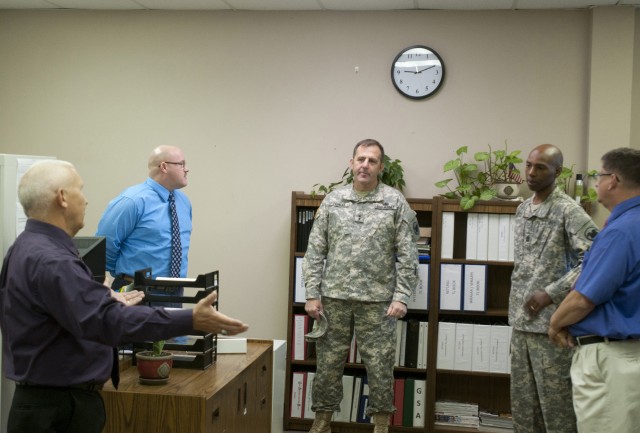FORT JACKSON, S.C. - "Any change, even a change for the better, is always accompanied by drawbacks and discomforts." The late 18th, early 19th century author and journalist Arnold Bennett may not have had the military in mind when he made this statement, but anyone who's been in the Armed Forces for more than a minute knows it to be true.
As the times change around us, so do our needs and so do the needs of the Army Reserve in order to serve the Soldiers and families that are a part of it. The new Reserve Personnel Action Centers are a response to the need for better customer service. Unit administrators (UAs) from several different units were relocated to central locations or hubs where they would work the daily functions of several units rather than just the one to which they were assigned. They would also be responsible for coordinating with satellite centers in their areas. The concept is meant to create a predictable, accessible personnel and administrative service infrastructure.
Although, as with many proposed changes, the RPAC concept was met with some resistance in the beginning, it turns out that the arrangement is efficient and increases customer service.
"I think the RPAC is a better fit for the individual units than having a UA," said William Gillespie, who works in an RPAC in Columbia, S.C., next to Fort Jackson. "The units will have better support given the availability of more personnel. The UA may be at training, on leave, or just out of the office; but the RPAC should have someone in the office during normal business hours all the time." Since the entire team of an office is never out at the same time, a phone call during business hours shouldn't ever go unanswered. There is even a weekend rotation in the event someone needs assistance during a battle assembly.
There are various benefits to the system as a whole. Unit commanders and training NCOs can concentrate on training since the personnel actions are taken care of by the RPAC. Knowledge is shared and back-ups are in place allowing needs to be responded to instead of relying on one person in an isolated location. The RPAC's have a broader area of knowledge because of technicians who come from different command backgrounds. The RPAC specialists should have a wider range of systems to allow for better Soldier support than a standard UA.
There are also benefits to the Soldiers working at the RPACs. "The Mil-Techs (military technicians) have more opportunity for growth in their career fields," said Mike Eckenrode, who works as the Supervisory Military Personnel and Administrative Specialist in Greenville, S.C. Before, the UA had to be assigned as a Soldier to the unit or command where they worked. In the new system they can be assigned to any Army Reserve unit which allows for more military promotion opportunities as neither their civilian or military progression will be based on availability of a position for both. They will also be free to train in their Soldier skills when the time comes instead of being utilized for civilian duties during military time.
Even though the concept was developed some years before, under Lt. Gen. James Helmly, then the Chief, Army Reserve, the RPACs in their current state stood up on July 15, 2011 and had gone through a couple name changes including Soldier Readiness Processing Centers (SRPCs), Army Reserve Personnel Action Centers (ARPACs) and now just RPAC. There are eight hubs in the 81st Regional Support Command and 16 satellites.
Some concerns were the loss of a high-speed UA that a commander could always depend on and where there are multiple people, continuity between individuals could be questionable. Issues such as these improve with time as teams gel and work together for the common goal of customer service.
"I think it will be very successful provided all the commands buy into it," said Mel Welborn, who recently retired as the Chief of the Regional Support Personnel Center. "There's always resistance to change, but once they see the assistance they're going to get from the RPACs, they may think we should have done this a long time ago."
In September, Maj. Gen. Glenn Lesniak, the USARC Deputy Commanding General for Support, made a visit to the 81st which included the RPAC, where he talked with Melborn and others in the facility. "This is where my head was at," he said, comparing the initial concept to the state of the new RPAC. "This is even better than I expected."
Despite any growing pains, the RPACs are sure to raise the level of customer service to 81st RSC Soldiers. "RPACs can only get better as time goes by," said Eckenrode.




Social Sharing